
Somewhere in the prefecture of Kumamoto, on the island of Kyûshû, is Gokanosho, a tiny village in the heart of the wooded mountains, nestled at an altitude of more than 1700 meters. Here is a mysterious region, little known, where an authentic Japan is hidden, far from the big cities teeming with technology.
It was only in 1959 that the area was made accessible by road and electricity arrived only a few years later. Today, only 350 inhabitants still live here in a preserved bubble, far from any modernity, refusing to leave their homeland, and thus continuing to perpetuate ancestral traditions. Even today, it is not uncommon for the village to be cut off from the world in winter because of the abundant snow.
Let's go for a jump in time, in Gokanosho, to meet nature and its inhabitants.
Summary
1First contacts
In May 2015, we were very lucky to be able to stay in this remote region. We were warmly welcomed by Hajime and Tayoko Matsuaka, a wonderful retired couple. For almost 40 years they have held a traditional Minshuku, Heikeso (u6c11u5bbf u5e73u5bb6u8358u8358), and very rarely receive foreign tourists who do not venture so far from the big cities.
At first, the couple refused our request for fear that they would not be able to give us a good welcome because they could not communicate with us. This was the first time they had been asked to receive foreigners who were not accompanied by a Japanese guide. Finally, it is thanks to the precious help of Schingo Hashizaki, the only English-speaking guide settled in Gokanosho with his family, that we were received. Through email exchanges, Schingo agreed to convince the couple, despite the language barrier.
A few months later, we went to Gokanosho ( u5bb6u8358u8358).
2Arrival in Gokanosho village
The long, narrow, sinuous road snakes through the wooded mountains. The journey seems last an eternity. Some sections are just wide enough to let a small car pass, but fortunately, many mirrors have been installed at every turn to see if a vehicle arrives in the opposite direction.
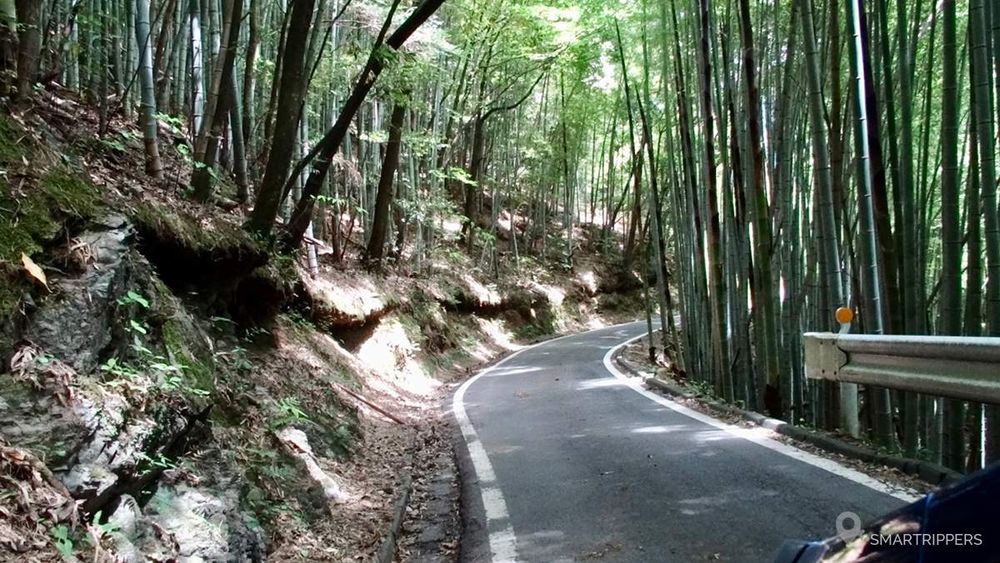
After about an hour's drive, we finally arrive in Gokanosho. The village is tiny. There is only what is strictly necessary: a petrol station, a very small adjoining store with the essentials for living and a post office. The few houses are scattered in the mountains.
Despite the GPS and good preparation, Minshuku Heikeso was not easy to find because it is far from the houses, far enough from the village center, and below a very small road.
3Our meeting with Hajime and Tayoko (Minshuku )
When we arrived, we were warmly welcomed by Hajime, who must have heard us arrive. Everything is so quiet here! He came up to us, greeting us. "Welcome" he said in approximate English. He then gave us the sign to follow him. This gesture touched us a lot, because we understood afterwards that our hosts had made the effort to learn a few words of English for our visit. Yet another way to salute the incredible hospitality of the Japanese!
We walk along several fish farm ponds for a few metres, next to the torrent that comes down from the mountain. We then see the old wooden Minshuku buildings , where Tayoko, his wife, awaits us.
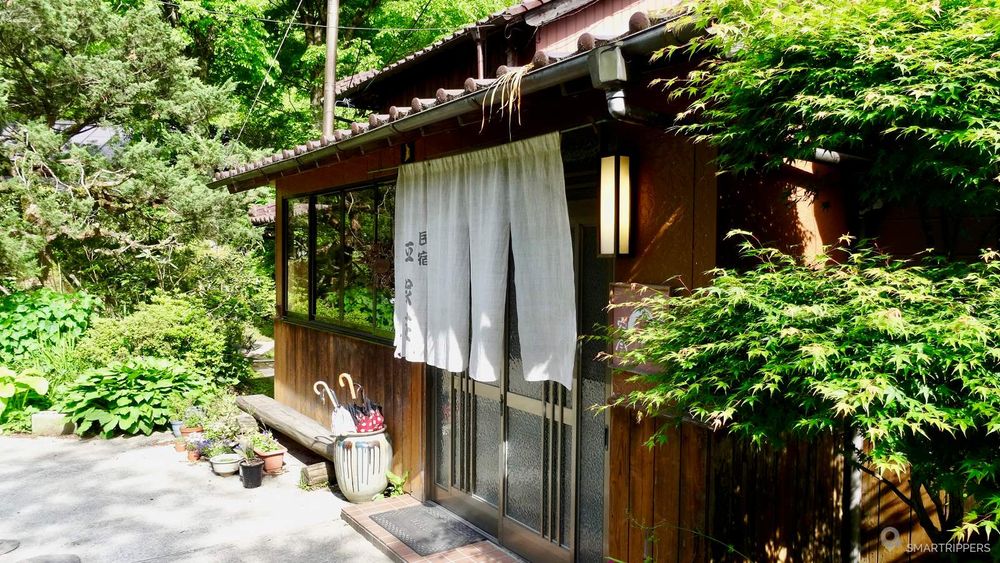
4The first exchanges
We take off our shoes and enter their home. Hajime then slips away and lets Tayoko guide us to our room. At first we were very apprehensive because she was afraid to express herself with shyness and fear that we did not understand. For the occasion, she had also learned a few english words to communicate the meal times. But most of the first exchanges were limited to a few greetings and smiles as a token of gratitude. Then we pulled out our formidable weapon: our translator on smartphone. Thus, we were able to translate some sentences into approximate Japanese.
Tayoko was surprised at first to hear the translator speak to her. Being unfamiliar with new technologies, she had a moment of hesitation. With a lot of tact, we showed her how the application worked, then a few moments later, she answered us, thus creating our first real exchanges.

Tayoko takes us then to discover the various rooms of the great Minshuku, as well as the hot baths located below the river. The place seems out of another time! In the garden, the wisteria in bloom tint this haven of peace purple, bathed by the quivering torrent that flows peacefully.
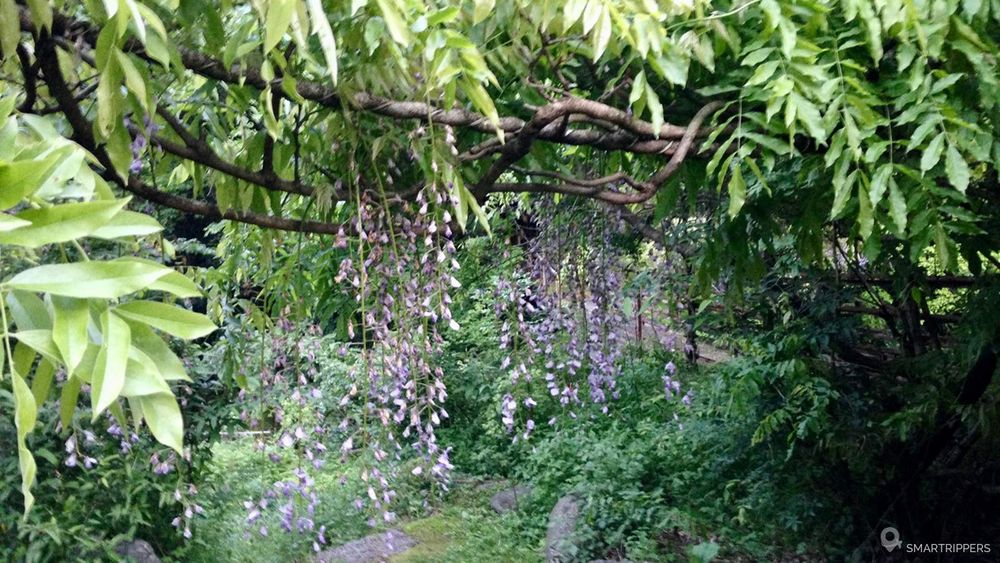

We take the time to settle in. Tayoko serves us tea, then we enjoy the baths until lunch time.
5A touching dinner
Around 18h30, we enter the dining room, which consists of a large central fire. Everything is made of wood. Benches allow us to sit around the fire that was lit for the occasion.
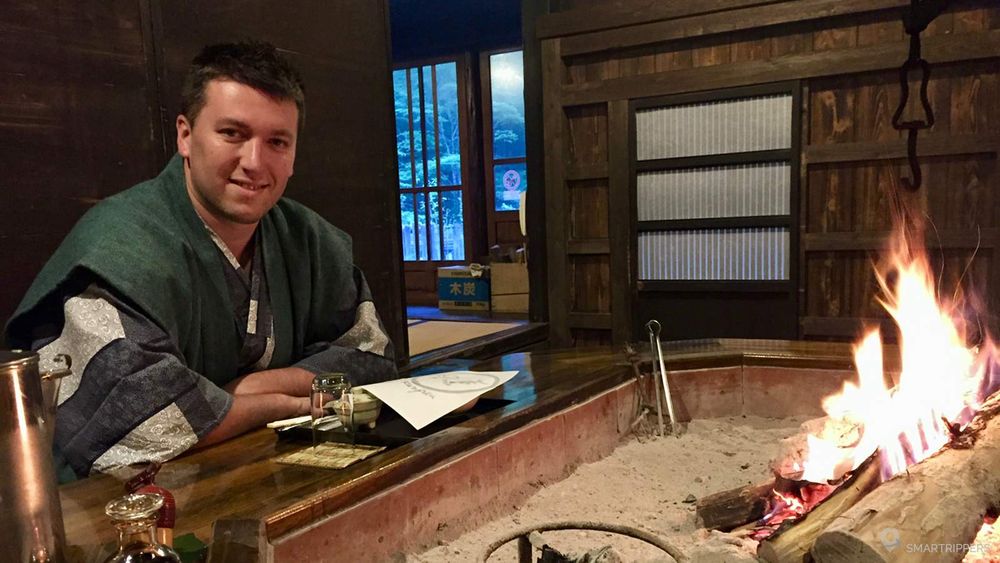
A sheet of paper was on our set. It was about the menu, detailing the multitude of dishes that we will taste. Of course, we can't read Japanese characters, but our hosts surprised us by putting a few words in English on the menu to thank us. The spelling made us smile, and this gesture touched us a lot.
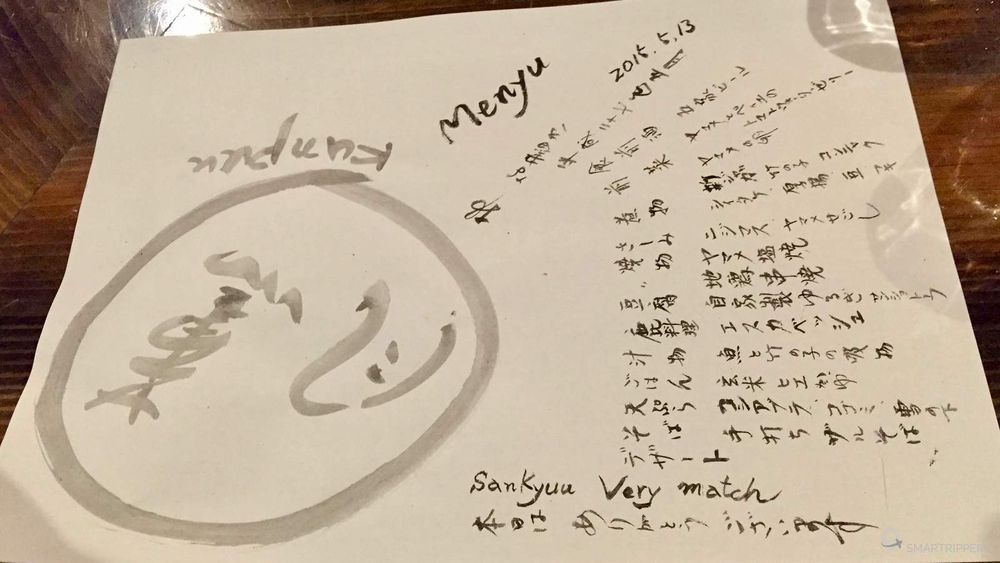
Then the dishes arrived, and the difficulty this time was in understanding the ingredients we were going to enjoy. And with a lot of enthusiasm we played riddles with Tayoko, using mimes, Japanese and English words. Fortunately, we knew the basics of Japanese cooking words, which helped us to understand. We also had a simplified dictionary on our smartphone, which also allowed us to ask questions.
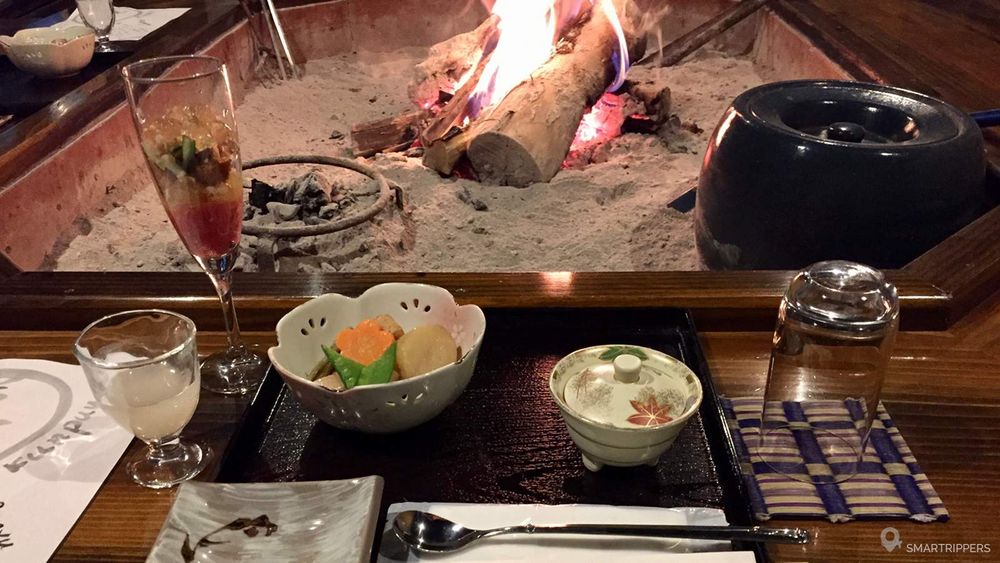
Little by little, our exchanges became more complex. Even though communication was not easy, we were able to understand each other and the discussions became more interesting. We wanted to know more about them, their way of life and what kept them here. A very touching discussion followed.
Tayoko went to get Hajime to tell us his story. Hajime tells us that he wanted to follow in his father's footsteps and that he had always loved living here. Tayoko tells us that she lived in the city when she was young, then when she met Hajime, she followed him to Gokanosho. They've always lived here, in this house. They admit that this way of life is not easy every day, but they are in love with this place, with nature and they would never go back to the city.
Today, they serve the ingredients they find nearby as meals. They have a small fish farm, hunt animals from the forest with traps, pick and grow plants. It's a life we sometimes envy, away from the hassle and stress of everyday life in the city. What is certain is that Hajime and Tayoko give off an immense joie de vivre!
With each new dish we discuss a new subject. We show them pictures of our country, of our house. Each time they seem amazed and surprised.
Then Tayoko gives us the name of Paul McCartney and his famous song: Yesterday. We understand that this title is important to her. So Flo starts singing the first lyrics of the song.
Yesterday all my troubles seemed so far away.
Now it looks as though they're here to stay.
Oh, I believe in yesterday.
A little shy, Tayoko whispers a few words. So I look for the song in my smartphone and press the play button. Hearing the sound of the first notes, Flo and Tayoko let themselves be carried away by emotion and sing together the first words. For a few seconds, emotion rises, then tears come to our eyes, all 3 of us.
We never thought we would live and share such moments despite the language barrier. This is one of the moments we would have liked to have filmed so we would never forget them, but we know that they will remain forever engraved in our memory.
6Surprise after breakfast
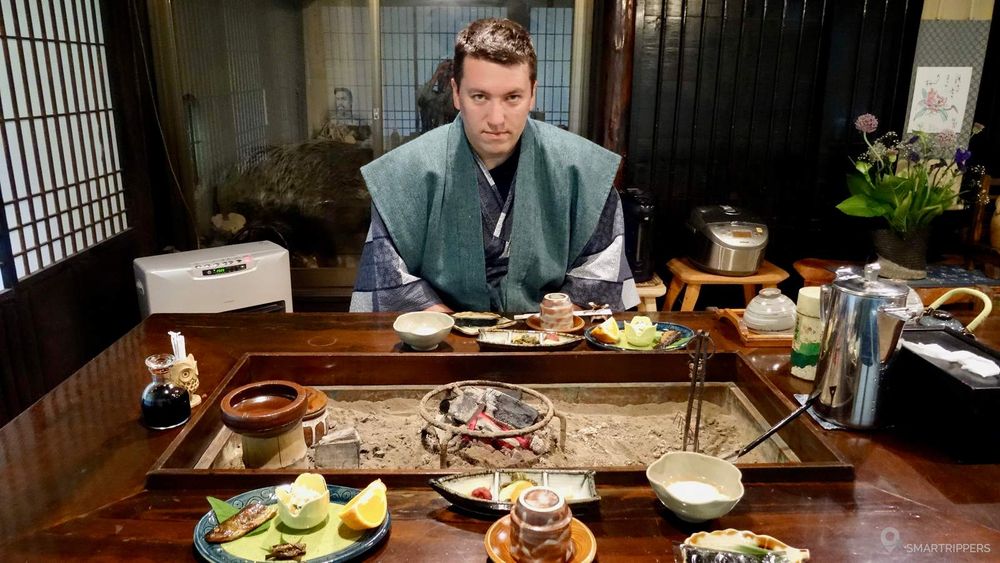
The next morning, after breakfast, Hajime calls us to show us something. He had taken out of his garage an old Toyota Land Cruiser that he had been keeping for over 40 years. Proudly, he wanted to show us this car so dear to him. One of the last testimonies of the past that still works. He turns on the engine and shows us it's still running.
He is really happy to share this moment with us. Even if we exchange only a few words, we understand each other just with our gestures and our glances. One more story that will be engraved in our memories.
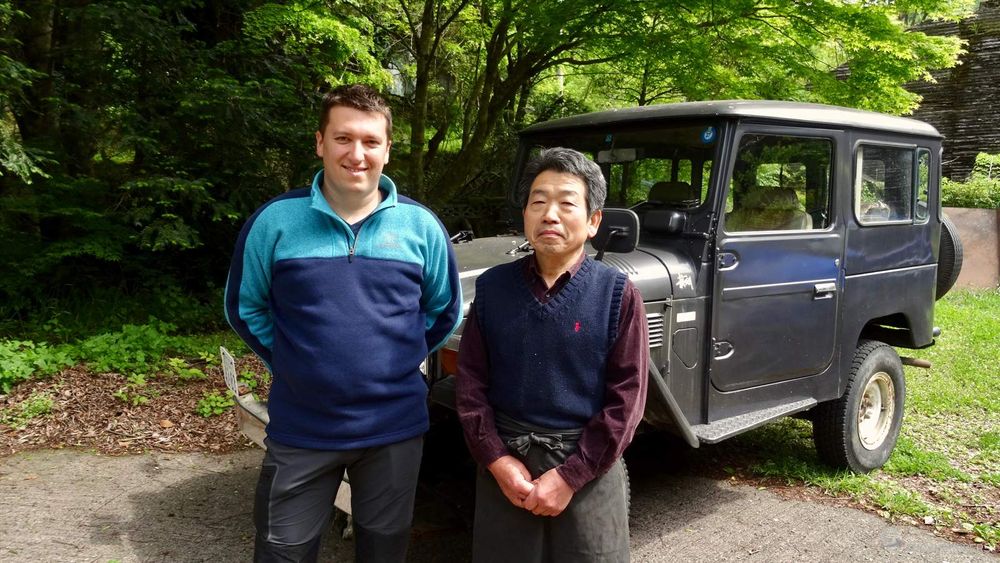
7Time of departure
Before leaving, we offer our guests a nougat bar that we brought back from France for occasions like this one. We were well aware that the Japanese refuse to receive a gift without offering one in turn. So Tayoko went to his storeroom, a little unprepared. She returns a few minutes later with 2 small luminous key rings as a thank-you.
Farewell is touching, we have a hard time leaving each other. Even if we did not speak the same language, this meeting was the most touching we had during this trip. We will never forget this wonderful couple who received us with extreme generosity.
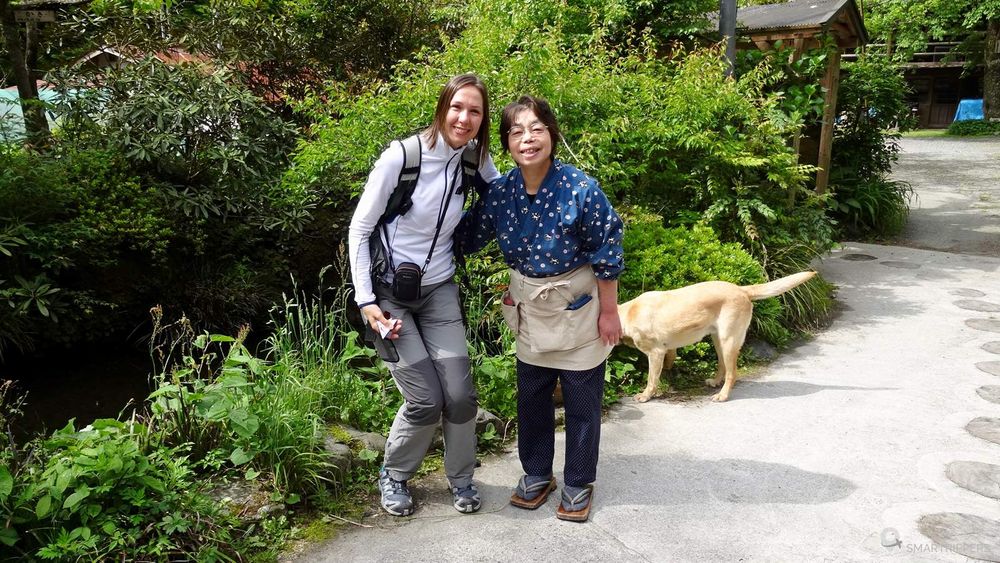
8Some links and thanks
- We could not write this article without thanking Hajime and Tayoko for their wonderful welcome.
- If you are interested in this remote region, we recommend this beautiful documentary made in Gokanosho by Griffith Film School. The main theme is about the depopulation of the village and its inhabitants who try to keep a maximum of life there. You will find beautiful testimonies, including those of Hajime and Tayoko: https://vimeo.com/117547859
- If you wish to visit the area with a guide (English speaking), we recommend Schingo Hashizaki, who has warmly helped us (volunteer) in the preparation of our visit. It also offers guided tours of the region. He will be happy to help you prepare your stay and make known his village that he loves so much.
We are Sandrine and Flo, French thirty-somethings. In 2019 we quit everything to live our dream, become nomads and travel around the world. We left with our baby, Lena, who was only 5 months old at the time. After a first trip around the Pacific Ocean by plane and a long 3 months stay in Hawaii, we left to discover Iceland for 3 months on board our 4WD pickup truck and truck camper. Then we continued our adventure in North America.
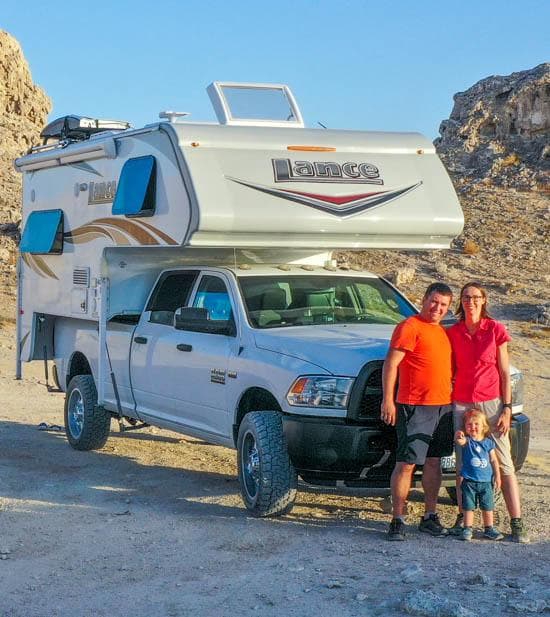
Today, if we can continue this adventure, it is above all thanks to our blog, Smartrippers! We created it one day in 2016, with the desire to share our good travel tips, without thinking that it would lead us there! We have developed it a lot over the years and have become experts on our 3 favorite destinations: Hawaii, Iceland and the American West. We now guide you to these destinations to help you plan the trip of your dreams!
Follow our adventures!